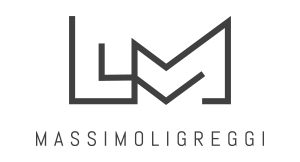BIO >
GALLERY >

Bench for Everybody, 2004,ream of corrugated cardboard sheets emptied

Coast to coast, 2007,oil and acrylic on canvas

Coast to coast, 2008,oil and acrylic on canvas

Da cima a fondo (predella), 2011,Oil (silver) on panel

The whole world in a detail (Fabric), 2020, oil on canvas,Ph Leonardo Morfini

The whole world in a detail (Fabric), 2023,oil on board

The Whole World in a Detail, 2019, oil on canvas,Ph Leonardo Morfini

Unite d’habitation (terrasse), 2016, oil on canvas

Unite d’habitation (terrasse), 2016,oil on canvas

USAISO, 1996-2013,cardboard and plaster

The Weather Was Mild on the Day of My Departure, 2022,inkjet printing on Epson Ultrasmooth F. A. 325 gsm, oil on paper, Ph Leonardo Morfini

The Weather Was Mild on the Day of My Departure, 2018,inkjet printing on Epson Ultrasmooth F. A. 325 gsm, oil on paper, Ph Leonardo Morfini

The Weather Was Mild on the Day of My Departure, 2018,inkjet printing on Epson Ultrasmooth F. A. 325 gsm, oil on paper, Ph Leonardo Morfini

The Weather Was Mild on the Day of My Departure, 2018,inkjet printing on Epson Ultrasmooth F. A. 325 gsm, oil on paper, Ph Leonardo Morfini

The whole world in a detail (Fabric),2021, oil on panel,seven autonomous elements, 50x70 cm each
Paolo Parisi, Catania (1965), lives and works in Florence.
From the outset, the artist’s research appears to be centred on the transformation into an artistic image of an initial assumption that is not arbitrary, insofar as it is deliberately transposed through instruments that exclude the interference of psychological data such as cartography, architectural relief and photographic optics. The works, which are the result of a layering process of manual and industrial methods, of techniques and materials linked to the tradition of art in dialogue with modes of expression from other fields (architecture, graphic design, printing techniques, music), become devices that propose a physical dimension of the artistic experience and, in particular, of painting: its essence and tautology.
Since the 1990s, he has exhibited in numerous Italian and foreign galleries and museums, including: Building Gallery, Milan (2021); Museo Novecento, Florence (2019); Fondazione Brodbeck, Catania (2011); Museo d’arte contemporanea della Sicilia Palazzo Riso, Palermo (2011); Centro per l’arte contemporanea Luigi Pecci, Prato (2008); Städtische Galerie im Lenbachhaus, Munich (2006); Quarter, Florence (2005); GCAC Castel San Pietro Terme / Galleria Neon, Bologna (2002); Aller Art Verein, Bludenz (2001); Galleria Gianluca Collica, Catania (1996, 2006). Other recent participations include: Museo Geologico Gemmellaro, Palermo – official collateral event of Manifesta 12 – (2018); M.A.C. RO, Rome (2017, 2009, 2007); Fuori Uso, Pescara (2016); MSU Museum of Contemporary Art, Zagreb (2015); CNEAI, Chatoux, Paris (2013); Klaipêda Culture Communication Center, Klaipêda (2013); Magazzino d’arte moderna, Rome (2010); XIV International Sculpture Biennial, Carrara (2010); Villa Romana, Florence (2008); Primo Marella Gallery, Beijing (2007); Manifesta 7, Trento, Bolzano and Rovereto (2007); Museum of Fine Arts, Hanoi (2007); White House, Singapore (2007); Korean Design Center, Seoul (2007); Italian Cultural Institute, Tokyo (2007).
